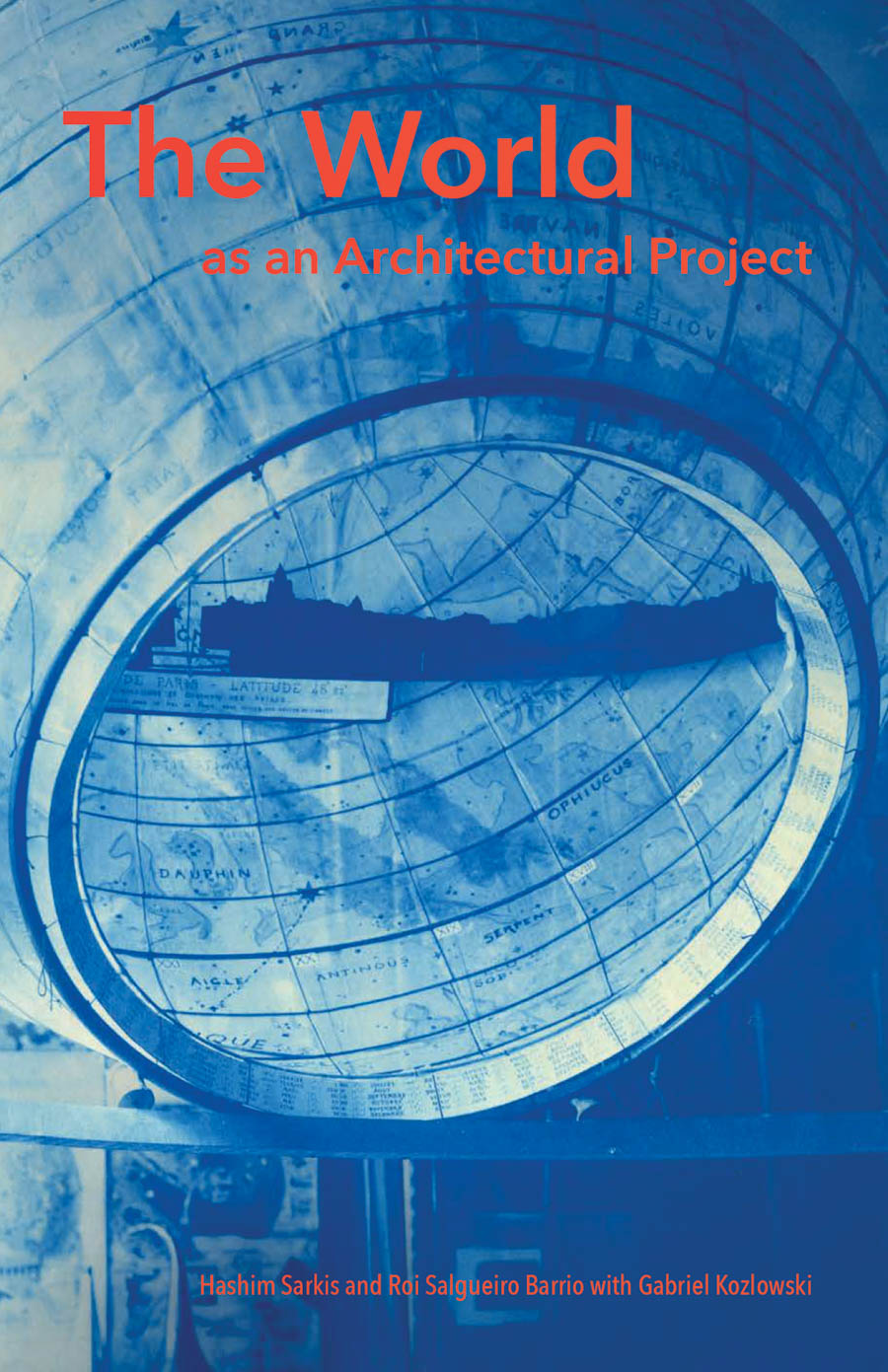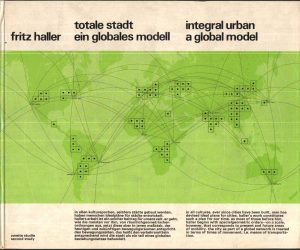Hashim Sarkis and Roi Salgueiro Barrio with Gabriel Kozlowski
MIT Press, 2020

As I write this review, the remnants of Hurricane Ida are meandering through Appalachia and the Mid-Atlantic. A storm system that devastated New Orleans and much of the Gulf South is now unleashing catastrophic flooding in New York, Philadelphia, and much of the east coast—filling subway stations with water, submerging entire highway segments, and otherwise revealing the limits of century-old infrastructure to service American cities. Perhaps surprisingly, more people have died from Ida in the Northeast than along the Gulf Coast—a product of one region’s deep experience with disaster and the other’s relatively new exposure to storms of this nature.
In Southeastern Louisiana, displaced residents are once again in a kind of diaspora—waiting in cities like Atlanta and Houston to hear when Entergy, the region’s private, miserly electric utility corporation, will restore power. There are echoes of last winter’s catastrophic storm in their plight. Then, the Electric Reliability Council of Texas was brought to the brink of complete collapse from a relatively brief cold spell—one that devastated the state’s deregulated energy grid, leaving Texans without power for weeks in homes ill-equipped to survive the bitter cold. As a result, pipes burst, foundations heaved, and entire communities were destroyed. It drew quick and apt comparisons to the carnage of Hurricane Maria—the deadly 2017 storm that, among other things, obliterated Puerto Rico’s privatized electric grid, hastened the island’s out-migration and diaspora, and killed nearly 6,000 people.

These, of course, are not isolated incidents. Australia and North America are living through their worst wildfire seasons on record; persistent, devastating droughts have crushed farmers in the United States and across the African continent for much of the last decade; and the entire planet remains mired in the throes of its worst pandemic in a century. Gone are the days of episodic crises, geographically and temporally bounded, and here now is the constant, whirring specter of forever-crisis—one that is reshaping the planet, its ecosystems, and how and where we all live and relate to one another.
It is in this context that I encountered The World as an Architectural Project by Hashim Sarkis, Roi Salgueiro Barrio, and Gabriel Kozlowski—a stunning, beautifully assembled anthology of utopian imaginaries stretching from the late nineteenth century into the present day. The book—an outgrowth of the eponymous seminar Sarkis taught at the GSD and MIT—delivers a chronology of planetary-scale speculative architecture and “describes how architects have historically thought and imagined at a world scale.… [I]t presents how architects embraced and helped formulate globalizing ideologies, at times uncritically accepting or reinforcing associated projects of domination, discrimination, and inequality, while sometimes profoundly challenging them.” The authors move effortlessly from the megastructural propositions of Khidekel’s Aero Cities—a sort of precursor to the paper architecture of Superstudio and Archigram—to the cold, technocratic ruthlessness of Sorgel’s Atlantropa—a neocolonial project that would become largely realized as the European Union went on to pillage and redevelop the African continent in the late twentieth century—to the “Disurbanism” of Okhitovich and Ginzburg—an early model of planetary urbanization developed later by Neil Brenner and the Urban Theory Lab.
Throughout the book, Sarkis and colleagues argue forcefully that the waning presence of geographical scholarship within architectural education has left the field ill-equipped to grapple with contemporary forces of globalized and racialized capitalism, or of climate and other epistemological crises, at the planetary scale. In the introductory chapter, upon asking rhetorically what the world might do for architecture, they argue that one aim of The World as an Architectural Project is to “fuse architecture with physical geography in order to organize and territorialize Earth systems.”

Figure 2. Buckminster Fuller and Shoji Sadao, Spaceship Earth. Edition of the Fuller Dymaxion Sky – Ocean World. Buckminster Fuller Institute. Philadelphia 1982. Creative Commons Attribution-Share Alike 3.0 Unported

Figure 3. Cover, Paolo Soleri, Arcology: The City in the Image of Man (Cambridge, Mass.: The MIT Press, 1969).
Setting aside the broader, neocolonial implications of this provocation, the most striking facet of this argument—and, in a sense, of the book itself—is the complete erasure of landscape architecture from this conversation. The projects in the book are about large-scale ecological systems; they engage with terrain and territoriality, attempting to fuse the built and natural environments with the instruments of design research and practice—feats that landscape architectural scholars have pursued, with varying degrees of success, for decades. For instance, one cannot read the authors’ analysis of Doxiadis’ “Ecumenopolis” without conjuring images of Richard Weller’s An Atlas for the End of the World or the World Park project, or of Elise Hunchuck’s striking fieldwork in the Chernobyl exclusion zone. Nor can one encounter Alberto Cruz, Godofredo Iommi et al.’s Amereida and Travesías without immediately contemplating their influence on the work of Urban Theory Lab, especially Martin Arboleda’s recent (and exemplary) The Planetary Mine. Though one can certainly understand the desire to organize a book about the world as an architectural project around capital “A” architectural projects, doing so creates glaring gaps in the broader chronology of planetary scale utopian imaginaries that Sarkis and colleagues otherwise beautifully construct.
Of course, no single book can take on all of these dimensions—and perhaps it is unfair of me to ask or wish for a deeper engagement with landscape architectural scholarship from a cadre of architects, even if the gap they studiously identify is already being filled by that discipline. The design fields need more rigorous histories of ideas, large and small, and an assessment of how they do or do not—as is the case for most of the projects in this book—succeed in restructuring the material realities of real people and communities. The World as an Architectural Project is a worthy entry in this vein—one that, hopefully, inspires new strands of inquiry that can bring the design field’s more radical, utopian histories into the present.
Billy Fleming is the Wilks Family Director of the Ian L. McHarg Center in the Weitzman School of Design, University of Pennsylvania and codirector of the climate + community project. He is coeditor of A Blueprint for Coastal Adaptation (Island Press, 2021), coeditor and cocurator of the book and now internationally-traveling exhibit Design With Nature Now (Lincoln, 2019), and author of the forthcoming Drowning America: The Nature and Politics of Adaptation (Penn Press).
How to Cite This: Fleming, Billy. Review of The World as an Architectural Project, by Hashim Sarkis and Roi Salgueiro Barrio with Gabriel Kozlowski, JAE Online, April 8, 2022.






